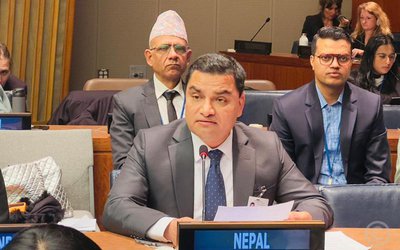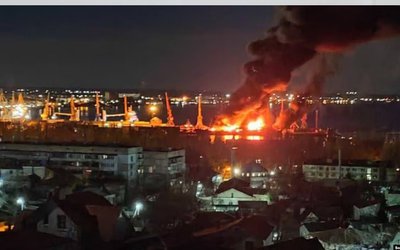By Buddha Basnyat, Cliff Tabin, Cameron Nutt , Paul Farmer
On April 25, 2015, an earthquake measuring 7.8 magnitude on the Richter scale shook Nepal. This (together with strong aftershocks) resulted in about 9000 deaths, over 23000 injured, and about two million displaced people.In order to find the way forward for Nepal it may be useful to examine some “pointers”by focusing on the 2010 earthquake and its aftermath in Haiti, a similarly impoverished country. That earthquake killed at least 230,000 people and displaced about one and a half million. Reconstruction has been a very slow process in Haiti.
No major infectious disease outbreaks have been reported five months out since the earthquake in Nepal. But following an earthquake of this magnitude, there will continue to be an elevated risk of epidemics of infectious diseases already endemic in Nepal, which include cholera, hepatitis E, typhoid, and leptospirosis. Typhoid and paratyphoid organisms, which cause enteric fever, are the most common cause of undifferentiated febrile illness in Nepal.1 Furthermore, resistant strains (H58 salmonella) are well-known to occur here, which may make this common organism difficult to treat with the most commonly used fluroquinolones. Sustained disease surveillance is crucial.
The Haitian cholera outbreak—like Ebola’s recent West African march—reminds us that these are rapidly changing situations; cholera has always been transnational, and outbreaks in Nepal brought on, during the pre-earthquake period, by plummeting access to clean water and sanitation would not remain confined to “the roof of the world” for long. The Haitian epidemic, which inextricably bound these two nations together, could likely have been prevented if precautions had been taken and a nimble response, linking prevention and treatment to new investments in water and sanitation systems, mounted early on. More attention to hand washing and water treatment may need to be emphasized in Nepal, but—as in Haiti—will not alone suffice to prevent waterborne illness where modern sanitation is lacking. Vaccinations may be essential. An oral vaccine against cholera, recently proven effective in rural Haiti and stockpiled by the WHO,2, a highly effective intramuscular vaccine against hepatitis E,3,4 and typhoid vaccine 5,6 should be stockpiled and delivered in Nepal through campaigns targeting those living in the areas most affected by the earthquake. The WHO, working with the Nepali ministry of health, should play a leadership role in such efforts.
In addition, mental health issues as evidenced by a sharp increase in post-earthquake hospital admissions in organophosphate poisoning for self-harm have to be effectively dealt with. Finally with the winter approaching in many high altitude earthquake-ravaged villages strategies to counter cold and hypothermia need to be taken seriously.
As in Haiti, “building back better” will necessitate the construction of more earthquake-resistant housing. But almost in tandem the definition of “building back better” should be expanded toinclude sustained improvements in overall health care services, education systems, and good governance.
The good news is that even prior to the earthquake Nepal’s Ministry of Health had acknowledged inadequate access to curative health services in rural areas as a major problem. The focus until now was almost exclusively on preventive medicine and primary health care. This produced good results in terms of reducing maternal and child mortality, certain forms of malnutrition and communicable diseases. As a result, Nepal was on track to achieve many of the Millennium Development Goals for health.
In re building Nepal,the government with the help of the international community should focus on districts like Gorkha, Nuwakot, Dhading, Kavre and Sindupalchowk—the hardest hit rural areas. In several of these districts, up to 90% of health facilities were destroyed or seriously compromised7. Retrofitting and rebuilding of these damaged and destroyed health posts and hospitals will be carried out.But these districts could also be the testing grounds for an innovative Nepali answer to the challenge of universal health coverage (in keeping with the emerging UN Sustainable Development Goals) by “rebuilds” that are capable of offering both protection from disease or injury and high quality care for those who do fall ill or get hurt.
Finally in Haiti, more than $2.4 billion in humanitarian relief funding was rapidly mobilized in the weeks following the earthquake. But less than one percent was channeled through the government. Most of the money was funneled through foreign contractors and middlemen.8Locally-owned and-led programmes were generally shunned. This clearly did not help build capacity for responding to disasters.
In conclusion the Nepali people as the main stakeholders with the help of the international community must seize upon this post- earthquake period as a golden opportunity to make the necessary investments in innovative health care in all its aspects. Crucially these investments should include not only proper sanitation, disease surveillance and relevant vaccination campaigns but also an exemplary way forward for Nepal towards universal health care, starting with the most earthquake-ravaged districts.
Published online in Lancet Global Health, Oct 14, 2015): Please include this line prominently.)

Buddha Basnyat MD
Buddha Basnyat, MD, MSc, FACP, FRCP, Director of the Oxford University Clinical Research Unit-Patan Academy of Health Sciences, Kathmandu.
- Altitude Sickness
- Feb 20, 2018
- The Annapurna Sanctuary
- Nov 29, 2015
- Diarrhea at the Summit
- Nov 08, 2015
- Altitude Sickness ( AMS, HAPE, HACE)
- Oct 15, 2015
- Tackle Nepal’s Typhoid Problem Now
- Sep 25, 2015















